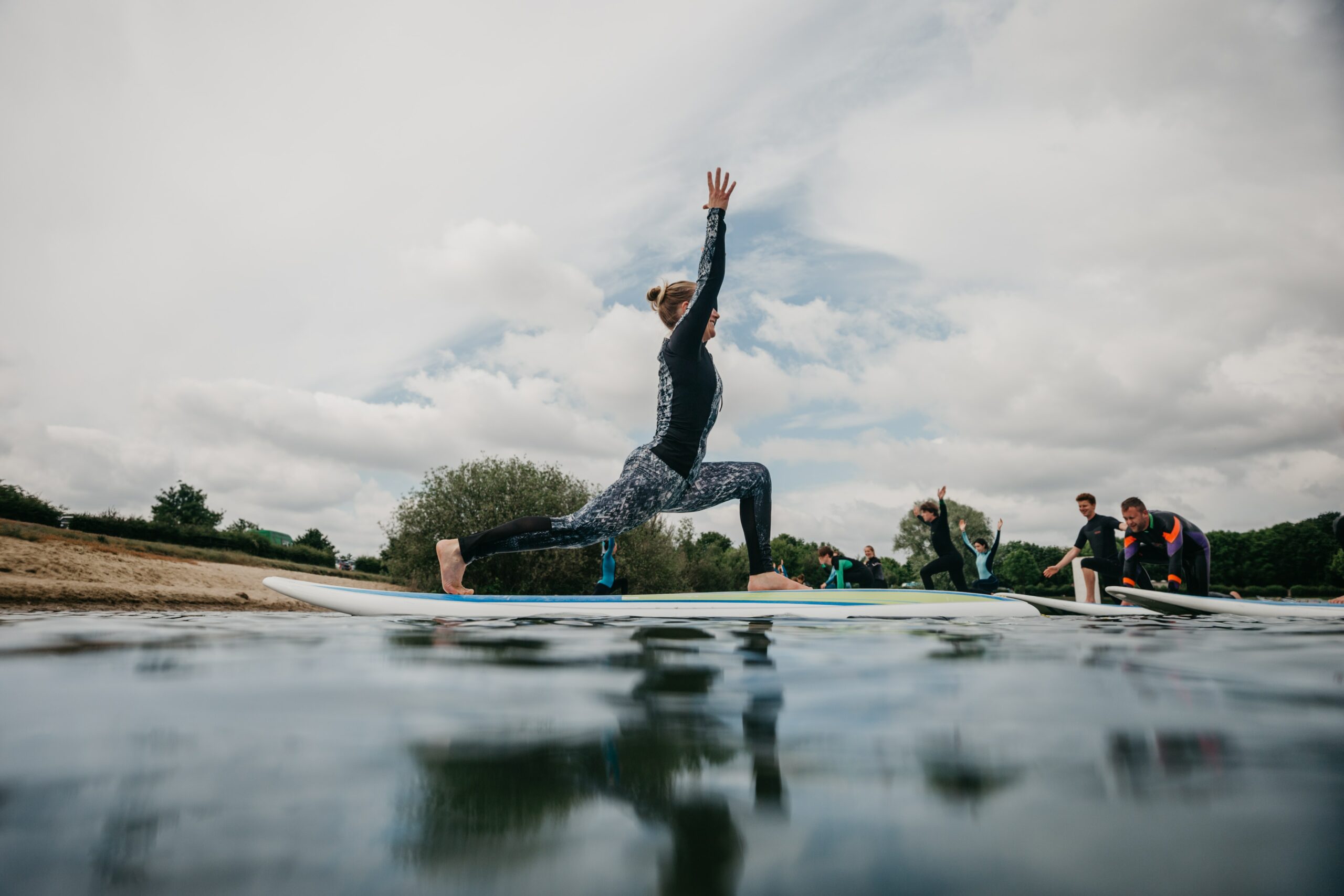How to prevent and treat foot blisters
Outdoor Activities | March 28, 2024
Win a trip to Crete by becoming an Explore + member
SAIL
May 29, 2023

Are you a fan of yoga and stand-up paddleboarding (SUP) and would like to combine both passions? SUP yoga is a relaxing water sport with many health benefits, and it can be as high-intensity as you want it to be. It is also a complete workout that engages your core muscles. With the right board and equipment, this outdoor activity is bound to become one of your favourite sports.
In this article, you will discover everything there is to know about practising SUP yoga on the water:
Whether you are a casual yogi or a yoga expert, you may want to explore a new type of yoga practice outside your usual studio. If you’re already a stand-up paddleboarding enthusiast, SUP yoga could be a great way to improve your balance and strengthen your core muscles. Whatever your reason for taking up SUP yoga, this low-impact activity will allow you to enjoy yourself in a fun and relaxed setting.
Of course, a stand-up paddleboard is the most important piece of gear you need to take up SUP yoga. It should be wide enough to provide you with maximum stability on the water while you do your yoga poses. For example, you could opt for an average-length model (10 ft to 11.5 ft/305 cm to 350 cm) with a width of 34 in. to 36 in. (86 cm to 91 cm).
If you’re hesitating between an inflatable or a hard paddleboard, you should know that while both are suitable for SUP yoga, an inflatable board may be more comfortable and slightly less rigid.
Furthermore, stand-up paddleboards created specifically for SUP yoga are usually designed with a padded surface on their entire length for added comfort. Also, think of equipping yourself with a special SUP anchor so your board doesn’t drift away with the current during your practice.
For further details on how to choose your stand-up paddleboard, read our blog article.
Your SUP yoga clothing can be the same clothing you wear during your usual yoga practice, e.g., soft, stretchy sports apparel. Just make sure your clothes are made with synthetic fabric and not cotton, so they can dry quickly if they get wet.
As SUP yoga can obviously only be done outside on the water, it is important to bring clothing that will protect you against the sun’s harmful rays.
If you are worried about being cold or wet, you could also wear a light wetsuit.
Whether you lose your balance or jump in on purpose, falling into the water does sometimes happen when practising SUP yoga. For this reason, many prefer to wear a bathing suit underneath their clothes.
However, remember that yoga poses involve movements that can cause your bathing suit to shift. Two-piece models with shorts and a bra could be better suited.
To choose the right men’s or women’s bathing suit this summer, have a look at the latest models in stores.
Why do SUP yoga enthusiasts never wear personal flotation devices (PFD)? Mostly because SUP yoga sessions often take place on shallow water bodies or in areas where you can stand up in the water. However, if you feel safer wearing a PFD during your first sessions, there is nothing stopping you.
The rest of your safety equipment can consist of a floating sunglasses strap so you don’t lose your pair in the water, sunscreen for sunny days and a hat or cap to avoid heatstroke (if you plan on doing inversions, choose a hat with a cord).
To learn more about the accessories you need for paddleboarding, read our article.
This inversion pose (legs apart, arms extended towards the floor in an inverted V shape, head in line with your spine, straight back, and buttocks pushed upwards) is a well-known yoga and SUP yoga asana (or pose). It is a good way for beginners to work on their stability, with all four extremities staying in contact with the board.
This body-toning pose (standing up, feet together, knees bent, arms stretched upwards towards the sky with palms pressed together) is also a yoga classic. It gives thighs and ankles a rigorous workout while also strengthening the upper body. Since the legs are together and not spread apart during this pose, it is an excellent way to work on balance and tone muscles. You can use your paddle for support while performing this pose.
This stretching pose (one leg bent forward, the other extended backward with one heel towards the side of the board, straight back, head facing forward, arms spread apart, one forward and the other one backward) helps yogis feel grounded while working on their strength and balance. The pose allows you to work on stability as you shift your weight towards the front of the board and lets you gently stretch your muscles between more intense poses.